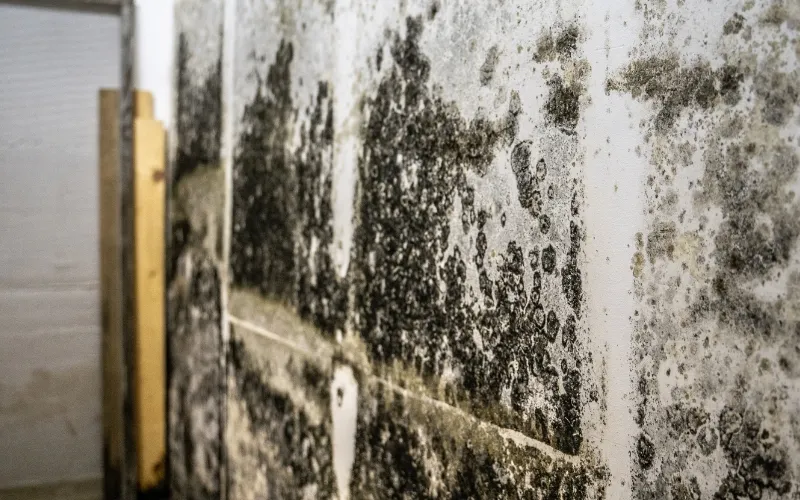The Hidden Dangers of Mold: Health Risks
Mold is far more than just an unsightly nuisance lurking in damp corners of your home. This silent intruder poses serious health risks that can affect entire families, often developing unnoticed until symptoms become severe. Understanding the dangers of mold exposure and taking swift action for remediation isn’t just about maintaining property value—it’s about protecting your health and well-being.
The Invisible Threat
Mold thrives in environments with moisture, warmth, and organic materials to feed on. Common household locations include bathrooms, basements, attics, and areas around leaky pipes or windows. What makes mold particularly dangerous is its ability to spread rapidly through microscopic spores that become airborne, allowing contamination to extend far beyond the visible growth area.
Many homeowners only discover mold problems when they notice a musty odor or visible discoloration on walls and surfaces. However, mold can grow hidden behind walls, under flooring, or in HVAC systems for months or even years before becoming apparent.
Serious Health Implications
The health effects of mold exposure range from mild irritations to severe respiratory conditions and systemic health problems. Understanding these risks underscores why immediate action is crucial.
Respiratory Issues represent the most common health problems associated with mold exposure. Individuals may experience persistent coughing, wheezing, shortness of breath, and throat irritation. Those with asthma often find their symptoms significantly worsen in moldy environments, with some experiencing severe attacks that require medical intervention.
Allergic Reactions affect many people exposed to mold spores. Symptoms include sneezing, runny nose, red or itchy eyes, and skin rashes. These reactions can persist as long as exposure continues and may worsen over time with repeated contact.
Vulnerable Populations face heightened risks from mold exposure. Children, elderly individuals, pregnant women, and people with compromised immune systems or chronic respiratory conditions are particularly susceptible to severe health effects. For these groups, even brief exposure can trigger serious complications.
Toxic Mold Syndrome occurs with certain species like black mold (Stachybotrys chartarum), which produces mycotoxins. Exposure to these toxic compounds can cause neurological symptoms, chronic fatigue, memory problems, and severe respiratory distress. Some individuals develop multiple chemical sensitivities following toxic mold exposure.
Long-term Health Consequences may include chronic sinusitis, recurring respiratory infections, and persistent inflammatory responses. Some studies suggest links between prolonged mold exposure and more serious conditions, though research continues to evolve in this area.
The Critical Importance of Timely Removal
Delaying mold remediation creates a cascade of problems that become increasingly difficult and expensive to address. Mold colonies double in size approximately every 24-48 hours under favorable conditions, meaning a small problem can become a major infestation within days.
Health Deterioration accelerates with continued exposure. Initial mild symptoms often progress to more severe conditions, and individuals may develop permanent sensitivities or chronic health issues. Children exposed to mold during critical developmental periods may suffer lasting respiratory problems.
Structural Damage compounds over time as mold breaks down organic materials in your home. Wood structures can become compromised, drywall may need complete replacement, and personal belongings can be permanently damaged or destroyed.
Increased Remediation Costs result from delayed action. What might initially require professional cleaning and minor repairs can escalate into major reconstruction projects involving wall removal, flooring replacement, and extensive decontamination procedures.
Professional Remediation: The Safe Approach
While small mold problems (less than 10 square feet) might be manageable with proper precautions, larger infestations require professional intervention. Certified mold remediation specialists possess the expertise, equipment, and safety protocols necessary for effective and safe removal.
Professional remediation typically involves containment of affected areas, air filtration systems, careful removal of contaminated materials, thorough cleaning and disinfection, and moisture control measures to prevent recurrence. Attempting to handle significant mold problems without proper training and equipment can actually worsen contamination by spreading spores throughout your home.
Prevention: Your First Line of Defense
The most effective approach to mold management focuses on prevention through moisture control. Maintain indoor humidity levels between 30-50%, promptly repair water leaks, ensure proper ventilation in bathrooms and kitchens, and regularly inspect areas prone to moisture accumulation.
Regular maintenance of HVAC systems, proper insulation, and prompt attention to water intrusion events can prevent most mold problems before they develop into health hazards.
Taking Action
If you suspect mold in your home, don’t ignore the warning signs. Musty odors, visible growth, water damage, or unexplained health symptoms warrant immediate investigation. Professional mold testing can identify the extent of contamination and guide appropriate remediation efforts.
The hidden dangers of mold extend far beyond cosmetic concerns, representing genuine threats to human health and property integrity. Timely identification and professional remediation protect your family’s well-being while preserving your home’s value and structural soundness.
Remember that mold problems rarely resolve themselves and typically worsen without intervention. Taking swift, appropriate action isn’t just recommended—it’s essential for maintaining a safe and healthy living environment. Your health is worth far more than the cost of proper remediation, making immediate action upon discovery the wisest investment you can make.
Dangers of Mold Emergency?
Call 416 Restoration Today!
Learn more ↴
